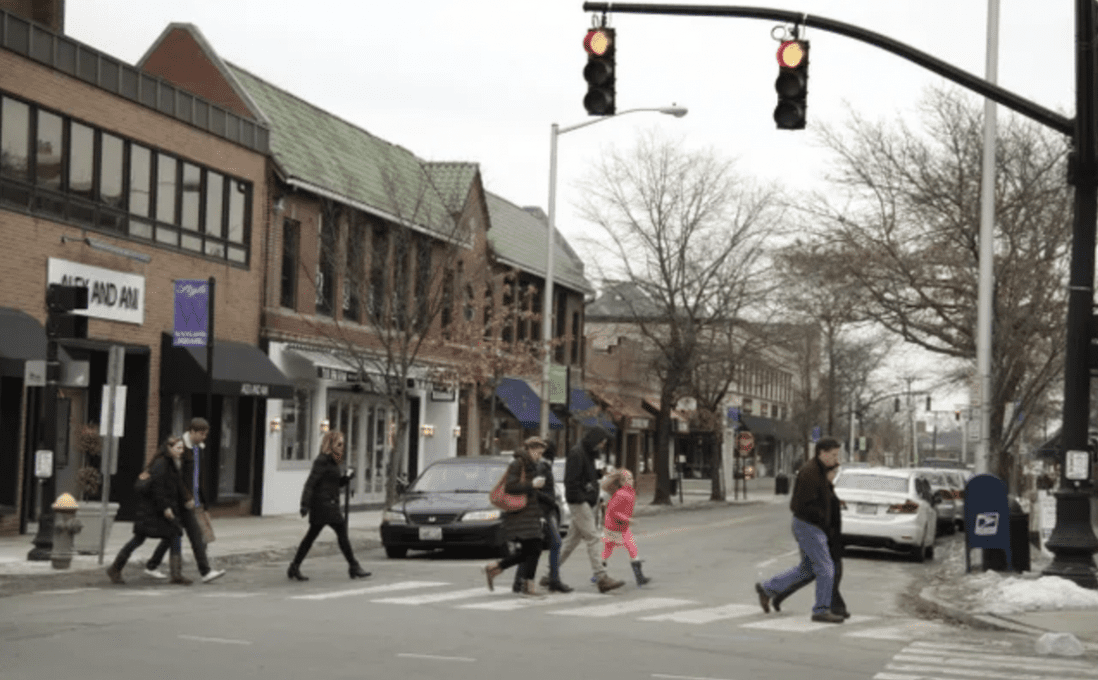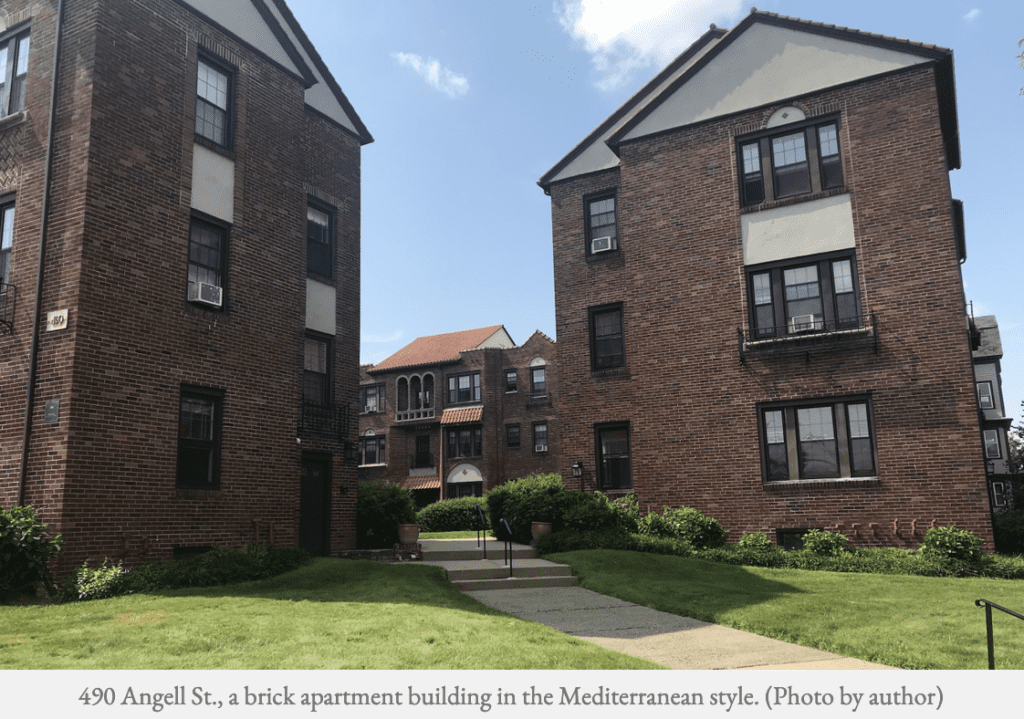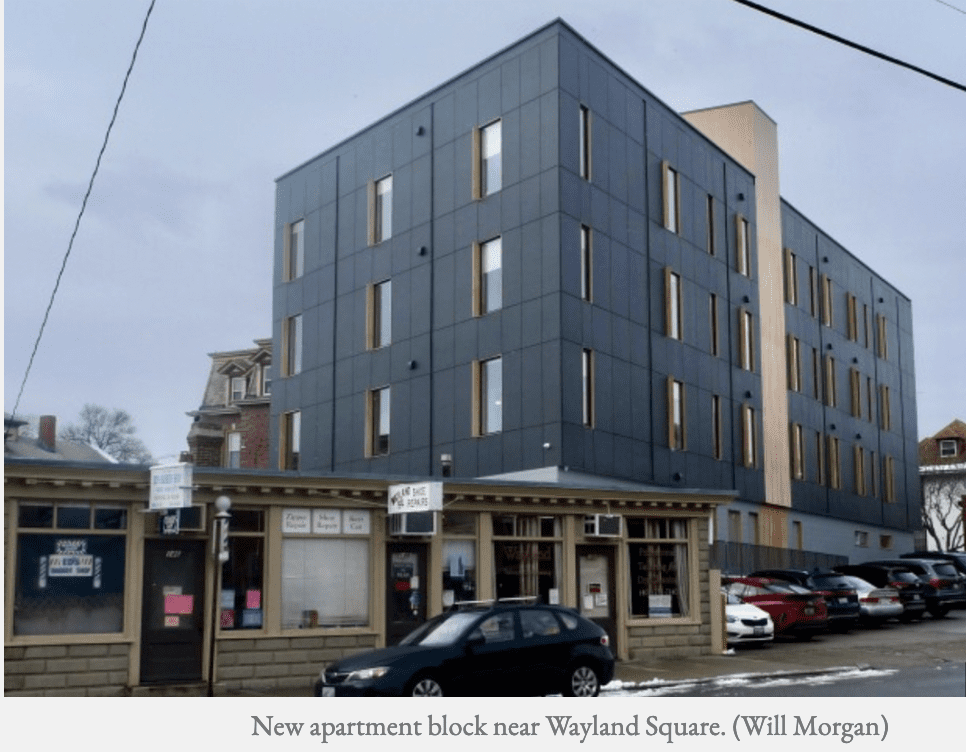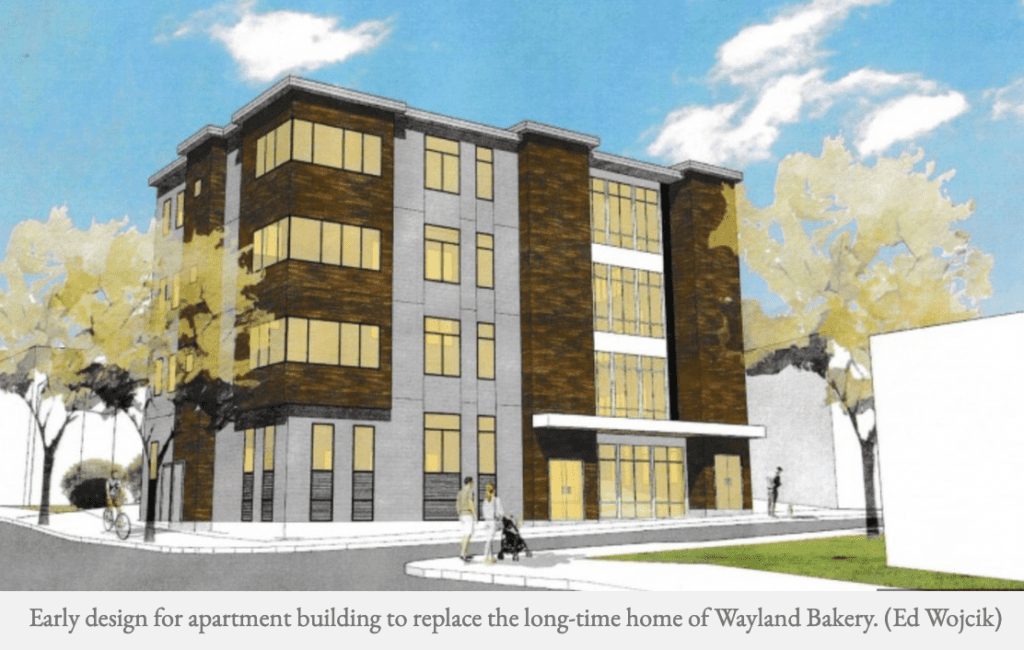Search Posts
Recent Posts
- Rhode Island Weather for May 5, 2024 – John Donnelly May 5, 2024
- Honoring 154 new Eagle Scouts May 5, 2024
- Gimme’ Shelter: Meet John at the Providence Animal Control Center May 5, 2024
- Ask Chef Walter: Mastering Asparagus – Chef Walter Potenza May 5, 2024
- Green Animals Topiary Garden sets its annual plant sale May 5, 2024
Categories
Subscribe!
Thanks for subscribing! Please check your email for further instructions.

Bad advice for Wayland Square – David Brussat
by David Brussat, Architecture Here and There, contributing writer on architecture
Wayland Square, named for Brown University’s fourth president, on land owned long ago by one of its founders, Moses Brown, is one of the most delightful neighborhoods in the city of Providence. It has fine shops and restaurants, and hundreds of elegant single-family houses, built mostly in the vicinity of 1910-1920. It’s no surprise that developers want to take every available space and build apartments.

And that might not be such a bad thing if they were inclined to model their proposals on the brick residential towers that are Wayland Square’s most notable architecture. Wayland Manor and its even more ornate neighbor, 490 Angell St., flank Wayland Avenue as it heads south into the square. How easy it would be to copy the past, the beautiful past.
Instead, developers want to give us this:

And that’s okay with architecture critic Will Morgan, who describes the abomination above, inflicted upon Wayland Square by architect Andrew Hausmann, of the Chicago firm Perkins & Will, as “a handsome composition with a commanding sense of presence … whose monochromatic gray facade provides an air of elegance.” He urges the developer of proposed new apartments at 128 Wayland Ave. to take a similar tack, to “push their comfort zone a little.”
That is a term that architects understand as “give the client something he is not going to like.” This is a preferred sales technique of modern architects going back to Ludwig Mies van der Rohe. The final director (1930-1933) of the modernist Bauhaus school, in Germany, said “We should treat our clients as children, not as architects.” This is what architect Hausmann has done, but he probably didn’t expect Will Morgan to give him a boost. Morgan says that the new building “could be wrapped in a metal façade or some sort of scrim echoing the red and blue colors of the vintage sign.” Huh?
In short, Morgan urges the architect to treat the developer as if he were a child.
A stroll down Wayland Avenue starting from four or five blocks north of the square reveals a number of very pleasant single-family homes erected in recent decades. They look like the traditional houses that have long characterized the neighborhood. They were designed by architects who did not treat their clients like children. Andrew Hausmann and his ilk can afford to treat their clients like children because, unlike clients who want an architect to design their own home, their clients’ future tenants have no say in what the building will look like. In all probability, the developer is a fool who wants his building to demonstrate that he is on the cutting edge … of what?
And why is Will Morgan giving him the thumbs up?
Below is an early version of the design for 128 Wayland Ave., long the home of the wonderful Wayland Bakery. Let us hope that developer Kyle Seyboth and his architect, Ed Wojcik, decline to take Will Morgan’s advice. They should make it better, not worse.

___
To read other articles by David Brussat: https://rinewstoday.com/david-brussat-contributing-writer/

My freelance writing and editing on architecture and others addresses issues of design and culture locally and globally. I am a member of the board of the New England chapter of the Institute of Classical Architecture & Art, which bestowed an Arthur Ross Award on me in 2002. I work from Providence, R.I., where I live with my wife Victoria, my son Billy and our cat, Gato. If you would like to employ my writing and editing to improve your work, please email me at my consultancy, [email protected], or call (401) 351-0451.
